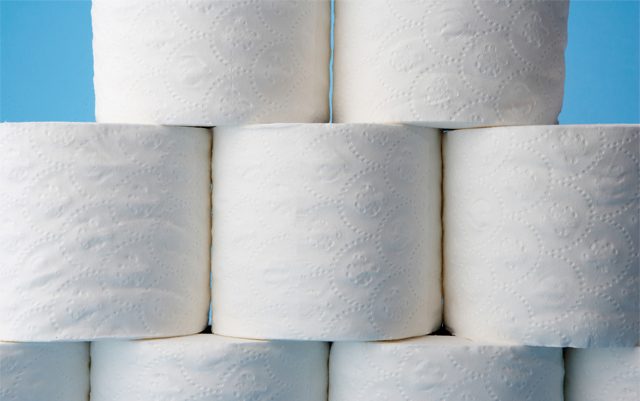Americans use an average of 50 pounds of toilet paper, per person, each year. This accounts for millions of trees being destroyed. While the Western world has cut back on paper usage with the development of technology, toilet paper is one area that cannot be improvised – or can it?
Before toilet paper was mass-produced, rich people would use hemp, wool or lace for wiping. Poor people used leaves, hay, rocks, seaweed, husks, or anything else that they could find lying around. Sometimes they would revert to stepping into the river where going and washing was all wrapped up into one.
In 1857, Joseph C. Gayetty invented the first commercial toilet paper in the United States. His product was made from Manila hemp and the sheets were moistened and soaked in aloe. Sold as medicated toilet paper, they were sold in flat sheets in a 500-pack, priced at 50 cents. For the next 10 years, Gayetty marketed his product as an alternative to using scratchy paper from leaves and catalogs.
In 1867, the Scott brothers took this idea and began manufacturing dry toilet paper from wood chips, a cheaper alternative. There were plenty of trees to use and their idea took off and spread throughout the Western world. Today, ECF, the chlorine dioxide-bleached pulp dominates the global chemical pulp market and forests are rapidly decreasing. While Gayetty had a great idea with using Manila hemp (not related to industrial hemp), the cost of the product was not economically feasible at the time. The Sears & Roebuck catalog was free.
The Scott brothers began to produce toilet paper from trees for pennies, turning this product into a necessity. However, the long-term effect of using wood chips and wood pulp has led to another problem. Hemp pulp paper can be made without any chemicals from the hemp plant’s hurd (pulp). Moreover, the U.S. Dept. of Agriculture found that an acre of hemp could manufacture four times more paper compared to a single acre of trees.
Toilet paper, made from the industrial hemp plant, has been marketed in other countries for some time now. It is now being advocated by environmentalists and its consideration noted by several toilet paper manufacturers. Perhaps now is the time to take another bold step in revisiting the role of toilet paper. Hemp pulp is more resilient, breaks down easily, and keeps our forests intact. Take the toilet paper challenge and decide if hemp is the way to go. You can find many suppliers by searching for hemp toilet paper on the Internet.
SOURCES:
http://ecopedia.com/newsite/Toilet_paper







Hi there, In in South Africa. And Cape Town just got the go ahead for Hemp cultivation. I want to get into hepm toilet paper. Is there anyone that can give me some advice? Ie, machinery needed and how to go about making the product?
Sorry Arnold, but The Marijuana Times cannot offer this type of advice. Best of luck to you!
Hi Kathy, you said that I can find hemp toilet paper online but I haven’t found anyone who makes it?. Can you tell me a site to checkout
Hello Kathy, I can not locate any of those hemp toilet paper companies. Please help.